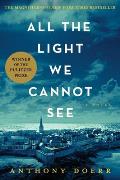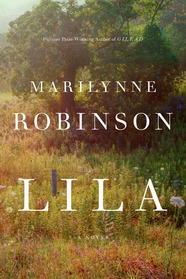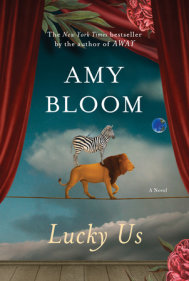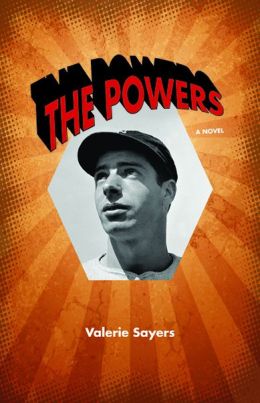 Historical
fiction is often just a guilty pleasure.
Sadly, many writers unable to imagine their own great story hide behind
history and contrive a story to match their research. But when historical fiction is well written it
isn’t a bit contrived; it’s entertaining and enlightening. Reading fine historical
fiction is like taking your grandmother’s timeless recipes and creating your
own stock from the bones left from your holiday prime ribs of beef and tasting cornbread
made in a well-seasoned cast iron skillet. These novels are as satisfying as
anything made with fresh ingredients in your grandmother’s ageless skillet. (My
definition of historical fiction is fiction set at least fifty years ago.)
Historical
fiction is often just a guilty pleasure.
Sadly, many writers unable to imagine their own great story hide behind
history and contrive a story to match their research. But when historical fiction is well written it
isn’t a bit contrived; it’s entertaining and enlightening. Reading fine historical
fiction is like taking your grandmother’s timeless recipes and creating your
own stock from the bones left from your holiday prime ribs of beef and tasting cornbread
made in a well-seasoned cast iron skillet. These novels are as satisfying as
anything made with fresh ingredients in your grandmother’s ageless skillet. (My
definition of historical fiction is fiction set at least fifty years ago.)
The best of 2014 are:
·
All
the Light We Cannot See by Anthony Doeer
·
Euphoria
by
Lily King
·
Let
Him Go by Larry Watson (published in 2013)
·
Lila
by
Marilynne Robinson
·
Lucky
Us by
Amy Bloom
·
The
Powers by Valerie Sayers (published in 2013)
·
The
Sojourn by Andrew Krivak (published in 2011)
Yes,
Sue Monk Kidd’s The Invention of Wings is
missing from my list and yes, it’s on many other “best of” lists but while I
found the abolitionists in 1922 South Carolina and the story of Handful, the
slave, to be compelling, I was less intrigued by Sarah Grimké’s tale. I liked
each of the novels I’ve listed better.
The
Best Historical Fiction Novel of 2014
 All
the Light We Cannot See by
Anthony Doeer is a book about the past that is certain to
be read far into the future. This National Book Award Finalist blends the lives
of two teenagers during World War II in a way that absolutely soars. Marie-Laure,
a blind girl, lives in Paris with her father, a locksmith at the Natural
History Museum. He builds her an intricate model of their neighborhood that she
memorizes at home then confidently navigates Paris with her cane. They escape
the German occupation in San-Malo, a walled French village, where her eccentric
uncle won’t leave their house by the sea. At the same time brilliant German
orphan Werner’s expertise with radio transmitters lands him in the Wehrmacht
tracking illegal radio transmissions and he ends up in Russia and then in Sant-Malo.
A sub plot involving a missing diamond brings in more intriguing characters.
There’s old-fashioned magic in this book with its intricate puzzle boxes,
thoughts of survival with dignity, and the power of the human spirit to endure.
All
the Light We Cannot See by
Anthony Doeer is a book about the past that is certain to
be read far into the future. This National Book Award Finalist blends the lives
of two teenagers during World War II in a way that absolutely soars. Marie-Laure,
a blind girl, lives in Paris with her father, a locksmith at the Natural
History Museum. He builds her an intricate model of their neighborhood that she
memorizes at home then confidently navigates Paris with her cane. They escape
the German occupation in San-Malo, a walled French village, where her eccentric
uncle won’t leave their house by the sea. At the same time brilliant German
orphan Werner’s expertise with radio transmitters lands him in the Wehrmacht
tracking illegal radio transmissions and he ends up in Russia and then in Sant-Malo.
A sub plot involving a missing diamond brings in more intriguing characters.
There’s old-fashioned magic in this book with its intricate puzzle boxes,
thoughts of survival with dignity, and the power of the human spirit to endure.
The
Runners-Up
 Euphoria
by Lily King, Anthropologists
Nell Stone (inspired by Margaret Mead), Stone’s husband Fen, and Englishman
Bankston canoe up New Guinea’s Sepik River to record tribal culture. A 1930s love triangle sets this distinctive
trio on their way to find euphoria. Reminiscent of Conrad’s Heart of Darkness and Patchett’s State of Wonder, this novel is entirely
unique and will leave the reader unsettled, captivated, and in awe of King’s immense
talent.
Euphoria
by Lily King, Anthropologists
Nell Stone (inspired by Margaret Mead), Stone’s husband Fen, and Englishman
Bankston canoe up New Guinea’s Sepik River to record tribal culture. A 1930s love triangle sets this distinctive
trio on their way to find euphoria. Reminiscent of Conrad’s Heart of Darkness and Patchett’s State of Wonder, this novel is entirely
unique and will leave the reader unsettled, captivated, and in awe of King’s immense
talent. Let
Him Go by
Larry Watson, George, a retired sheriff, and his wife,
Martha, head off to reclaim their grandson from their daughter-in-law who’s
remarried after their son’s death in this novel set in the early 1950s in North
Dakota and Montana. The new in-laws, a violent, evil crew, set the stage for a
frightening climax while George and Martha’s relationship stars. If you loved
Watson’s Montana, 1948 or are a fan
of Kent Haruf and Leif Enger, you’ll adore this. (2013)
Let
Him Go by
Larry Watson, George, a retired sheriff, and his wife,
Martha, head off to reclaim their grandson from their daughter-in-law who’s
remarried after their son’s death in this novel set in the early 1950s in North
Dakota and Montana. The new in-laws, a violent, evil crew, set the stage for a
frightening climax while George and Martha’s relationship stars. If you loved
Watson’s Montana, 1948 or are a fan
of Kent Haruf and Leif Enger, you’ll adore this. (2013) Lila
by Marilynne Robinson, If
you loved Gilead, read this prequel.
It’s more essay and theology than it is narrative yet Lila and her early life
and the world of 1920s and 1930s poverty as seen through the lives of
Midwestern migrant workers are beautifully rendered and the love that builds
between Lila and Rev. Ames is almost mystical. A National Book Award finalist,
it’s on many “Best Book” lists.
Lila
by Marilynne Robinson, If
you loved Gilead, read this prequel.
It’s more essay and theology than it is narrative yet Lila and her early life
and the world of 1920s and 1930s poverty as seen through the lives of
Midwestern migrant workers are beautifully rendered and the love that builds
between Lila and Rev. Ames is almost mystical. A National Book Award finalist,
it’s on many “Best Book” lists.  Lucky
Us by
Amy Bloom is a quirky, witty, beautiful novel that opens with “My
father’s wife died. My mother said we should drive down to his place and see
what might be in it for us.” Then
11-year-old Eva’s mother abandons her on her Dad’s doorstep where she meets her
half-sister Iris. The girls go to
California where Iris is in movies until a scandal forces their move to NYC in
a Thelma and Louise-style road trip. Capturing the prejudices and pulse of the 1939–1948
period, it shows that family is more than genetics. Read my full review.
Lucky
Us by
Amy Bloom is a quirky, witty, beautiful novel that opens with “My
father’s wife died. My mother said we should drive down to his place and see
what might be in it for us.” Then
11-year-old Eva’s mother abandons her on her Dad’s doorstep where she meets her
half-sister Iris. The girls go to
California where Iris is in movies until a scandal forces their move to NYC in
a Thelma and Louise-style road trip. Capturing the prejudices and pulse of the 1939–1948
period, it shows that family is more than genetics. Read my full review. The Powers by Valerie Sayers is set in New York in 1941 as war looms and Joe DiMaggio’s hitting streak seizes everyone. It captures 17-year-old Agnes O’Leary and her grandmother, the indomitable Babe, who has cared for Agnes’ family since her mother’s suicide. Babe, a diehard Yankee fan, knows that her prayers and powers fuel DiMaggio and the Yanks. The Washington Post’s Ron Charles aptly calls Babe a “baseball loving Olive Kitteridge.” The narrative grips; Babe and DiMaggio reign, and the photographs that are imaginatively interspersed throughout the text make the reader feel the era. (2013)
 The
Sojourn by
Andrew Krivak, Baby Jozef survives after his mother tosses
him into a Colorado river in 1899 in the bold opening of this story of war,
forgiveness, and dreams. Jozef’s father takes him back to his Slovakian
homeland where they live as shepherds. Cousin Zlee becomes Jozef’s adopted brother
and their sharpshooting and English language skills move them to the front in
World War I’s stark battles. It’s a spare, Cormac McCarthy-like rendering of
war, survival, love, and forgiveness that was a National Book Award
finalist. It’s sad how few people know
about this great novel. (2011)
The
Sojourn by
Andrew Krivak, Baby Jozef survives after his mother tosses
him into a Colorado river in 1899 in the bold opening of this story of war,
forgiveness, and dreams. Jozef’s father takes him back to his Slovakian
homeland where they live as shepherds. Cousin Zlee becomes Jozef’s adopted brother
and their sharpshooting and English language skills move them to the front in
World War I’s stark battles. It’s a spare, Cormac McCarthy-like rendering of
war, survival, love, and forgiveness that was a National Book Award
finalist. It’s sad how few people know
about this great novel. (2011)
Those all sound fascinating. Thanks for linking to the Saturday Review at Semicolon.
ReplyDeleteThank you. The more of us there are promoting reading, the more people will enjoy reading good books.
Delete